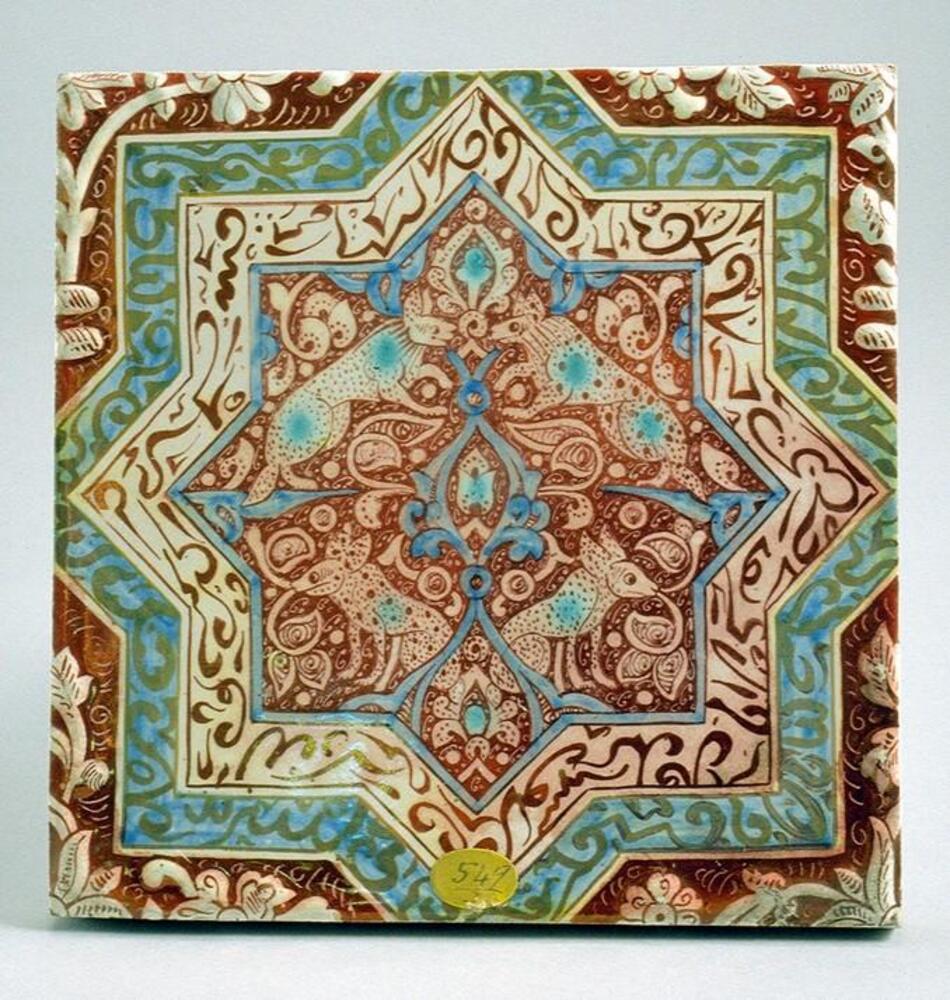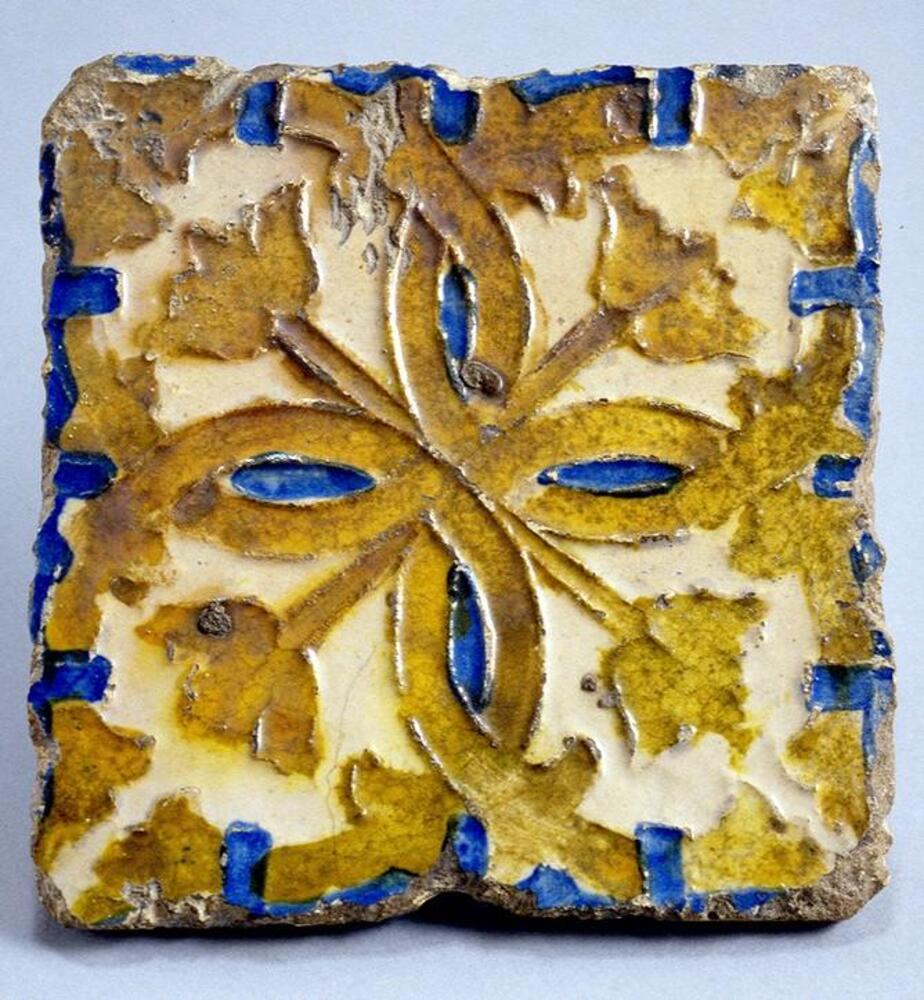Lesson Plan: Symmetry and Islamic Tile
Objectives
Students will identify geometric design concepts--radial design, repetition, and tessellations--found in Islamic ceramic tiles.
National Core Standards
- Apply criteria to evaluate artwork
- Relate artistic ideas and works with societal, cultural, and historical context to deepen understanding
Grades
K-2
Time Required
One or two class periods
Materials
- Images of Islamic tiles that contain symmetry
- Tracing paper
- Small mirrors
- Ruler
Lesson
- Discuss and display geometric vocabulary: angle, plane, shape
- Discuss and display design vocabulary: repetition, symmetry, two-dimensionality. Can students find a repeated pattern in the room (Floor tiles, ceiling, wall paper, notebook cover)? Is it symmetrical? Is it flat or does it look like it is “popping out”? Ask for examples of symmetry found in nature (butterfly, human face, leaf).
- Show students examples of symmetrical UMMA Islamic tiles. Using these designs and others, trace patterns on paper and demonstrate that they could be folded in half. Some designs are symmetrical on a vertical axis and some are horizontal, and some are both.
- Give students a square piece of paper, lightly divided in quadrants. Ask them to explore symmetry using tracing paper and rulers. If you have access to small mirrors, ask students to hold the mirror perpendicular to the axis and see if the design is the same in the reflection as on their paper.
Extension Activities:
- Explain how symmetry can be graphed with an x and y-axis. Using students’ symmetrical designs, draw a graph on top, with (0, 0) coordinates in the center.
- Use a compass: Demonstrate how a compass works and explain that almost all Islamic design is founded on the circle and line. If you are able, watch “All the Possible Polygons,” an animated drawing. https://www.youtube.com/watch?v=LBgIWQcC6lM Allow students to experiment with compasses and create symmetrical designs.
- Experiment with The Geometer’s SketchPad, mathematics visualization software http://www.dynamicgeometry.com/
- For advanced math students, refer to the mathematic formulas behind the design. See “Symmetry and Islamic Art:” http://www.math.ups.edu/~bryans/Current/Spring_2014/5_Ameneh_mccullough_project.pdf
Rate this Resource
AVG: 0 | Ratings: 0
& Author Notes
Creative Commons by-nc-saLast Updated
July 1, 2024 11:54 a.m.Report
Reporting Policy



